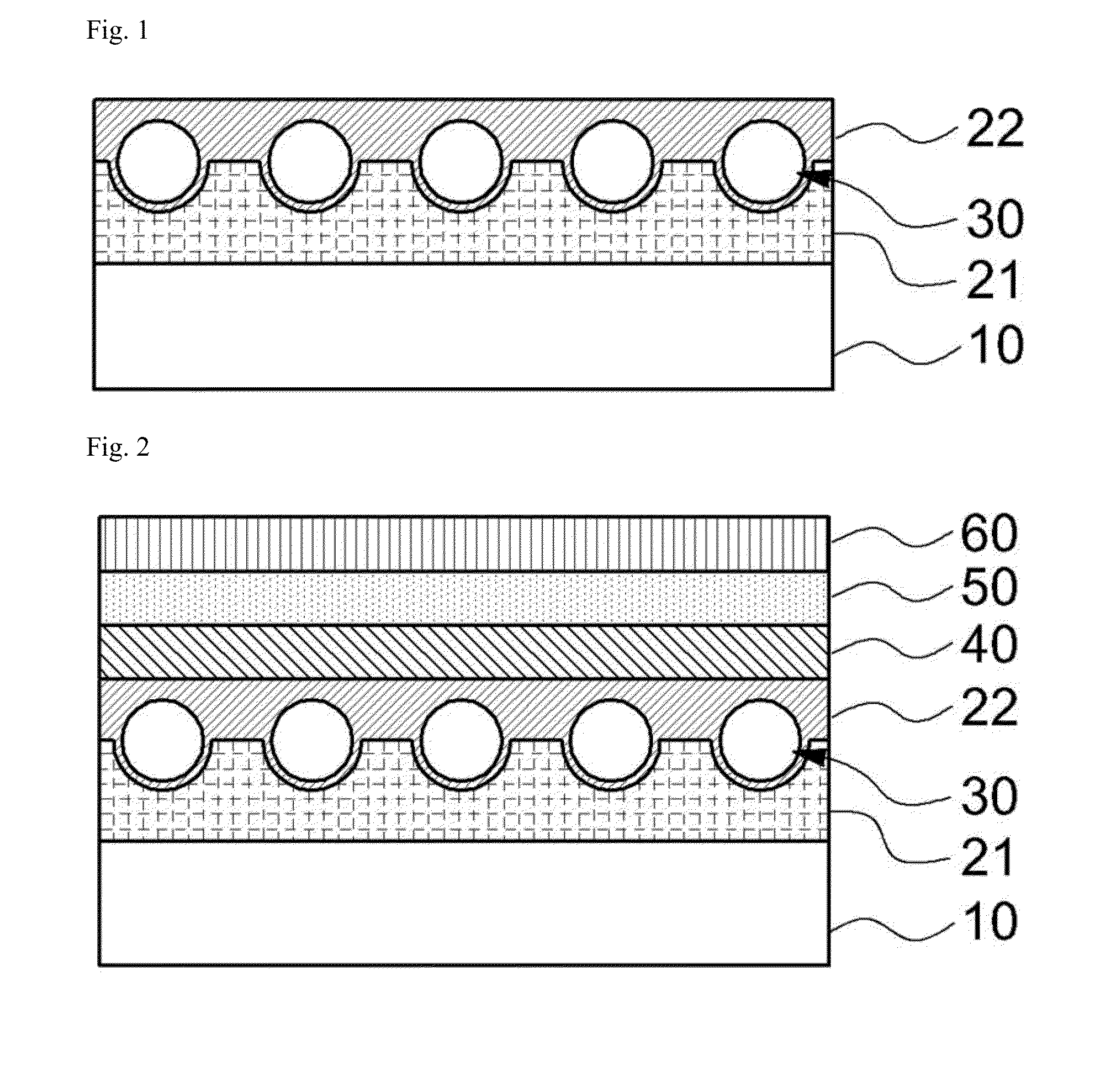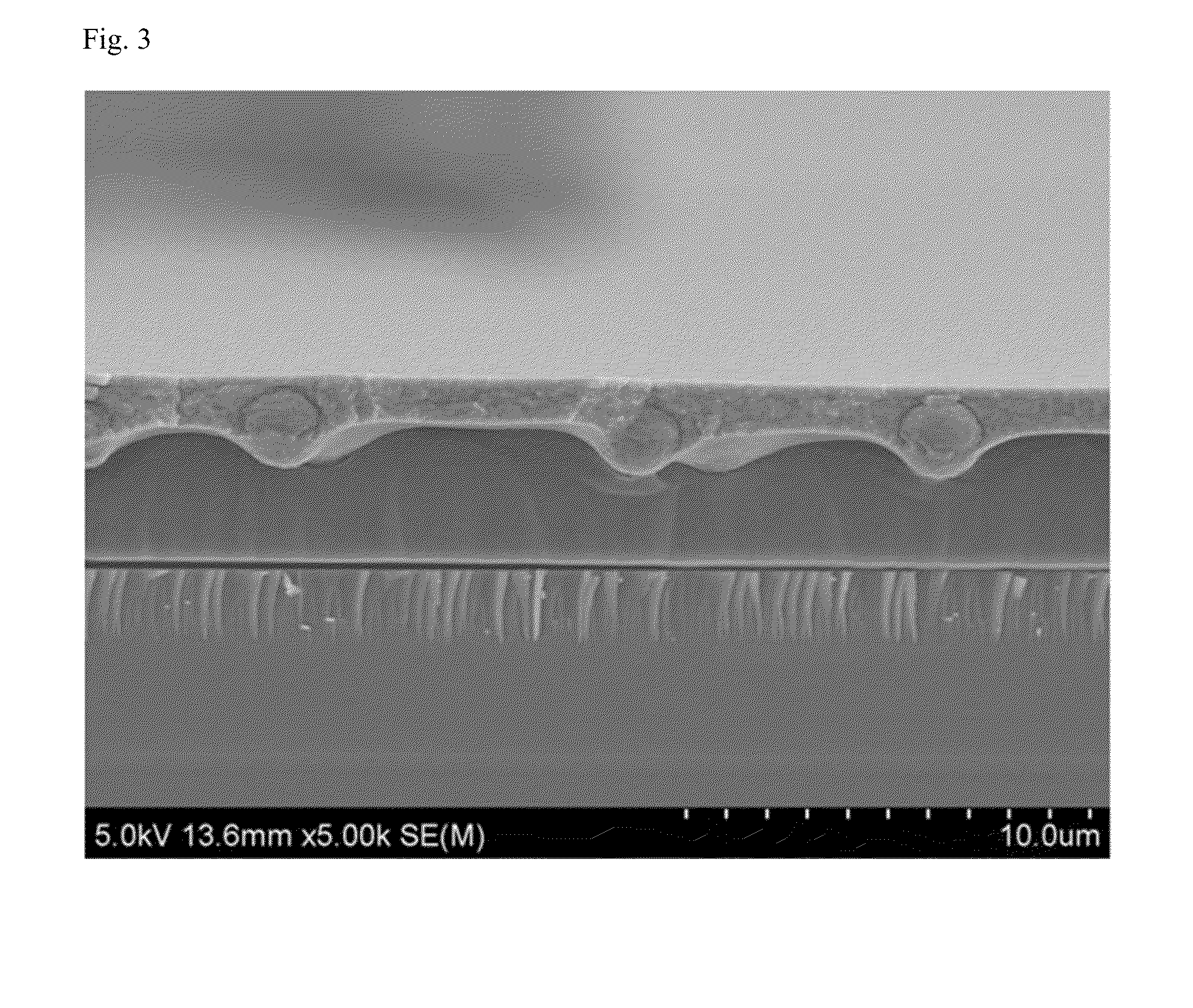Substrate for an organic light-emitting device and method for manufacturing the same
- Summary
- Abstract
- Description
- Claims
- Application Information
AI Technical Summary
Benefits of technology
Problems solved by technology
Method used
Image
Examples
example 1
Manufacture of Substrate for Organic Light Emitting Diode
[0057]A coating solution was prepared by sufficiently mixing 1 g of polymer beads (XX75BQ, diameter: 3 μm, Sekisui) having a refractive index of approximately 1.52 in 10 g of a UV curable organic binder (TYT-80-01, solid content: 25 wt %, Toyo ink) in which a high refractive filler is dispersed. Afterward, the coating solution was coated on a surface of a polyester film (PET film) which was not treated with a primer using a coater (#6 Meyer bar coater). Subsequently, the coated coating solution was dried at 100° C. for 2 minutes and cured with an energy of 1 J / cm2 using a UV curing system, thereby manufacturing a film. Separately, a suitable amount of UV curable adhesive (NOA65, Norland Products Inc.) was dropped on a glass substrate for an organic light emitting diode(OLED), the coated coating film was covered such that the coating layer faced the glass substrate, and the polyester film was pressed with a rubber roller to lam...
example 2
[0060]A substrate and an OLED formed on a planarized surface thereof were manufactured by the same method as described in Example 1, except that the number of polymer beads was changed to 1.5 g in preparation of a coating solution.
experimental example 1
Measurement of Roughness
[0063]Degrees of planarization were measured with respect to the substrates manufactured in Examples 1 and 2 and Comparative Examples 1 and 2. Particularly, the maximum height roughness was measured with respect to surfaces of the substrates manufactured in Examples and Comparative Examples, which were opposite to a transparent glass substrate. The maximum height roughness was obtained by measuring a difference between the maximum height and the minimum height of the manufactured sample, which was measured within a 10×10 μm2 region. Measurement results were shown in Table 2.
TABLE 2ComparativeExample 1Example 2Example 1Maximum height0.30.161.4roughness (μm)
[0064]Referring to Table 2, it can be seen that the planarized surfaces of the substrates in Examples 1 and 2 according to an exemplary embodiment of the present invention have a maximum height roughness of within 1 μm, but that in Comparative Example 2 is considerably increased in maximum height roughness. ...
PUM
| Property | Measurement | Unit |
|---|---|---|
| Diameter | aaaaa | aaaaa |
| Diameter | aaaaa | aaaaa |
| Shape | aaaaa | aaaaa |
Abstract
Description
Claims
Application Information
 Login to View More
Login to View More - R&D
- Intellectual Property
- Life Sciences
- Materials
- Tech Scout
- Unparalleled Data Quality
- Higher Quality Content
- 60% Fewer Hallucinations
Browse by: Latest US Patents, China's latest patents, Technical Efficacy Thesaurus, Application Domain, Technology Topic, Popular Technical Reports.
© 2025 PatSnap. All rights reserved.Legal|Privacy policy|Modern Slavery Act Transparency Statement|Sitemap|About US| Contact US: help@patsnap.com



